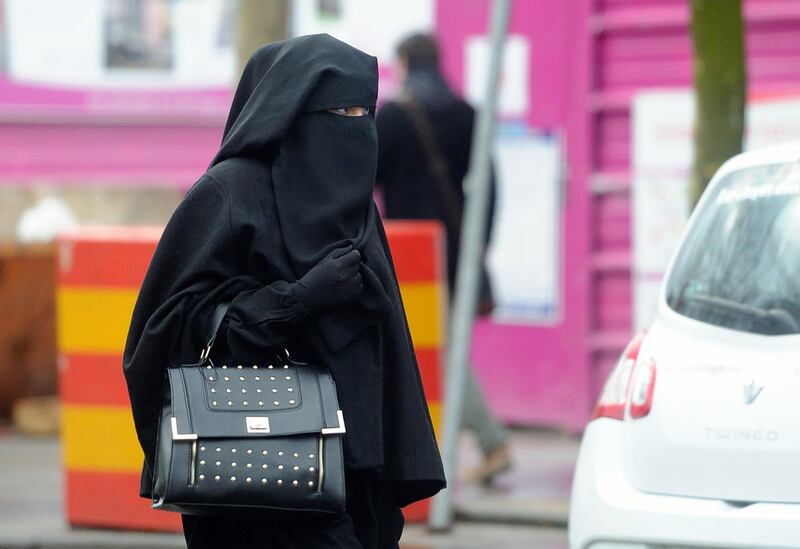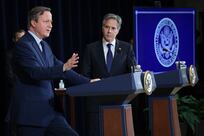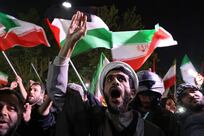The discussion around Muslims and Islam is, invariably, linked to notions of radicalism and extremism. Be it discussions about how Muslims are involved in terrorism, or how they are opposed to terrorism, the connection to the issue of extremism is constant.
That is the case whether it is around Muslims in minority contexts, such as Spain or Singapore, or Muslims in majority contexts, such as Syria or Saudi Arabia. That discussion is faced with problematic frames at the best of times, but it continues to deteriorate to the point where simple Muslim piety is mistaken as a sign of terrorism. That does not help the fight against radical militancy, and risks aiding in the production of other problems down the road.
This week, for example, Mutaza Hussain, a journalist and political commentator for The Intercept, uncovered a paper that supported strategies to address "factors that foster violent extremism". So far, so good – except when one of those factors is considered to be rooted in the "hijab phenomenon". An elaboration on that strategy included the notion that the hijab contributes to "the idea of passive terrorism". The author goes on to suggest that passive terrorism is when "moderate segments of the population decline to speak against or actively resist terrorism".
In one fell swoop, a plethora of deeply problematic ideas are set into place. The hijab is a normative religious and spiritual observance of many Muslim women – not extreme Muslim women or radical Muslim women, but simply Muslim women. Yet it is presented as a "phenomenon" related to "violent extremism" and "passive terrorism". The very notion of "passive terrorism" as expressed in works such as these indicates that there are large swaths of Muslims who decline to speak against terrorism – or, as a Times of London front page headline put it in December last year: "Muslims [are] silent on terror."
It is degenerate enough that such an argument around the hijab, or any mainstream religious observance of any faith, is considered to somehow be indicative of terrorism. It is far worse, however, when the paper that Hussain uncovered is described as a “white paper in support of counter-terrorism” and is published by the United States Air Force research laboratory, with a foreword by the director of defence intelligence at the office of the under secretary of defence for intelligence. In other words, such writings are not marginal, they have influence – and that is of great concern.
It ought not to be considered entirely surprising, of course. Discourse around Muslims in the West, for example, has slowly but surely shifted to include assumptions around the linkages between religious observance and support for terrorism. The more religious one becomes, so the argument goes, the more likely it is they will fall into terrorist groupings.
That sounds logical – but only if one assumes that Islam is, by its very nature, prone to radicalism and extremism. Of course, that is the implied meaning in many sectors – that Islam is “the problem” and thus needs to be reconstructed, reformed, redesigned and reconstituted for the modern world.
Certainly, within the radical ideology underpinning such groups as Al Qaeda and ISIL, there are neo-religious ideas. It is pointless to deny that. But they are not normative. If they were, then Al Qaeda and ISIL would be the majority of the Muslim world, instead of fringe elements, and they – or groups like them – would have been for the past 14 centuries. Instead, the vast majority of Muslims and religious scholars view such groups as deviant and heretical. There is no “silent majority’ that somehow acquiesces to such groups – even if the international media fails to pay attention to declarations of Muslim personalities, scholars and political figures who repeatedly denounce radical ideas.
While some people drift into such groups on account of those ideas, there is hardly a one-size-fits-all reason for their attraction. Many studies detail recruits being attracted for wholly different reasons, including feelings of exclusion and other social and political problems. That sometimes includes frustration with political events in other countries and the foreign policies of countries that such recruits reside in. But it may also be the attraction inspired by neo-religious ideas.
Where normative religion does play a role, it is not about driving people into radical groups. On the contrary, studies show that normative religion, conservative though it may be, holds people back from radical groups, precisely because normative Islamic authorities consider them to be deviant and heretical.
The critical issue here is whether Muslims in general view those authorities as credible – but that hardly relates to the performance of regular practices, such as the wearing of the headscarf or hijab.
The correlation of discussions around Muslims and extremism is here to stay for some time; that seems unavoidable. But radicalisation is a deeply important issue to get right. And getting it wrong in such a fantastically bizarre fashion is not only a waste of time, it diverts our attention from where it actually needs to be. We don’t have the luxury of doing that.
Dr HA Hellyer is an associate fellow at the Royal United Services Institute in London, and a non-resident senior fellow at the Rafik Hariri Centre for the Middle East at the Atlantic Council in Washington, DC
On Twitter: @hahellyer





